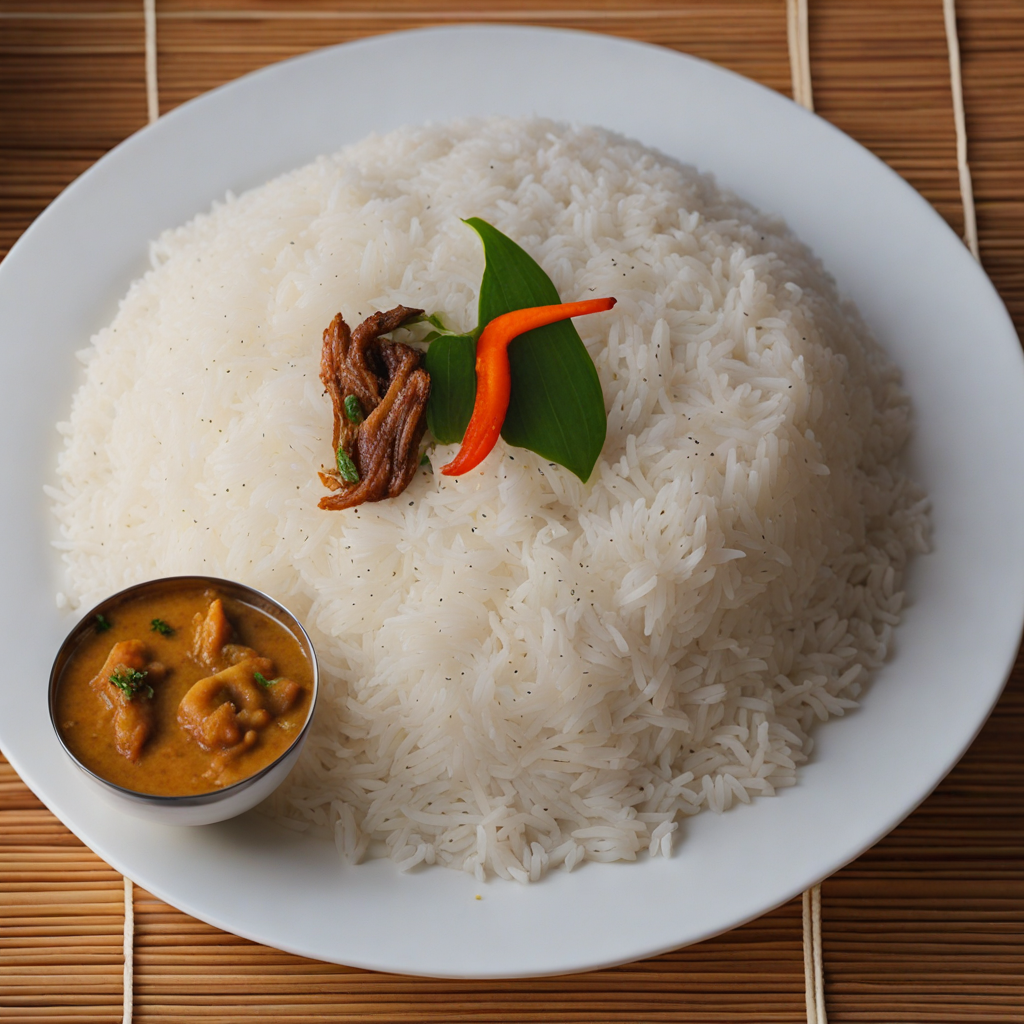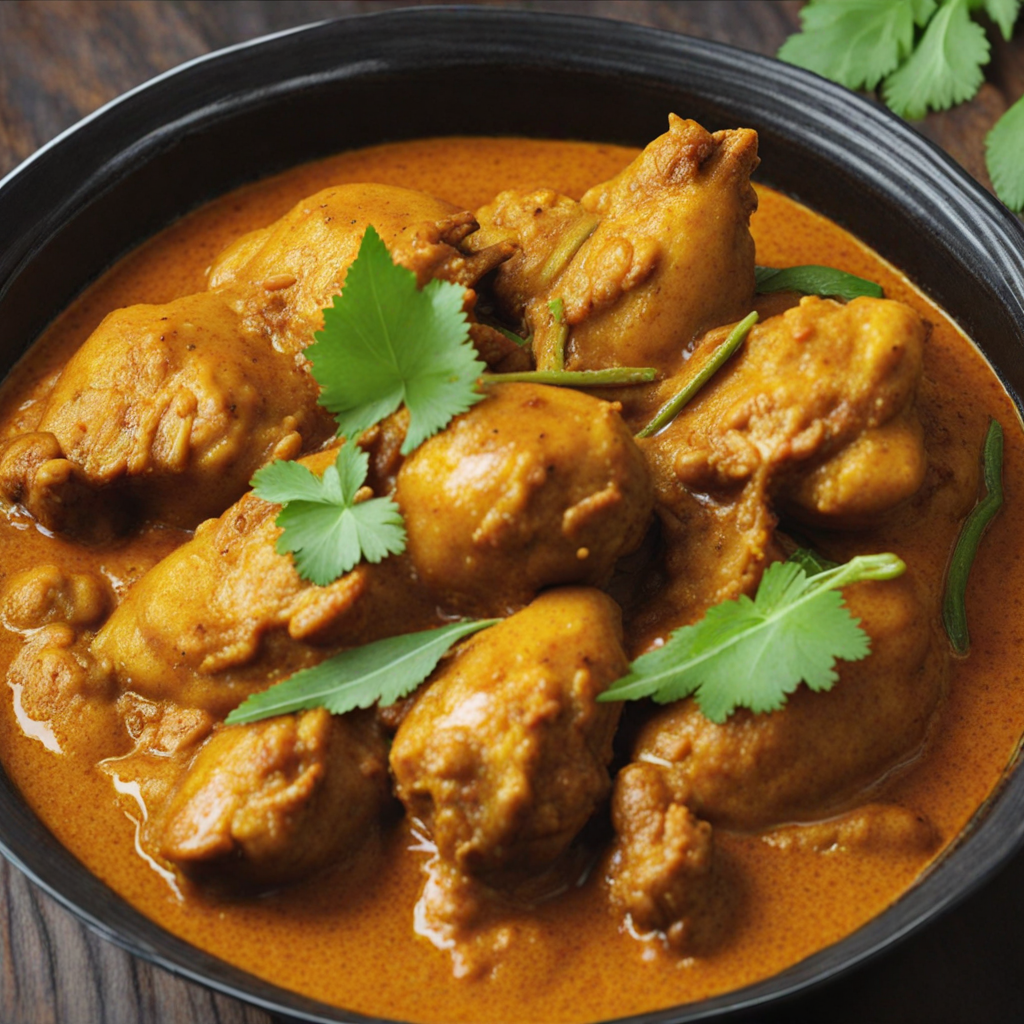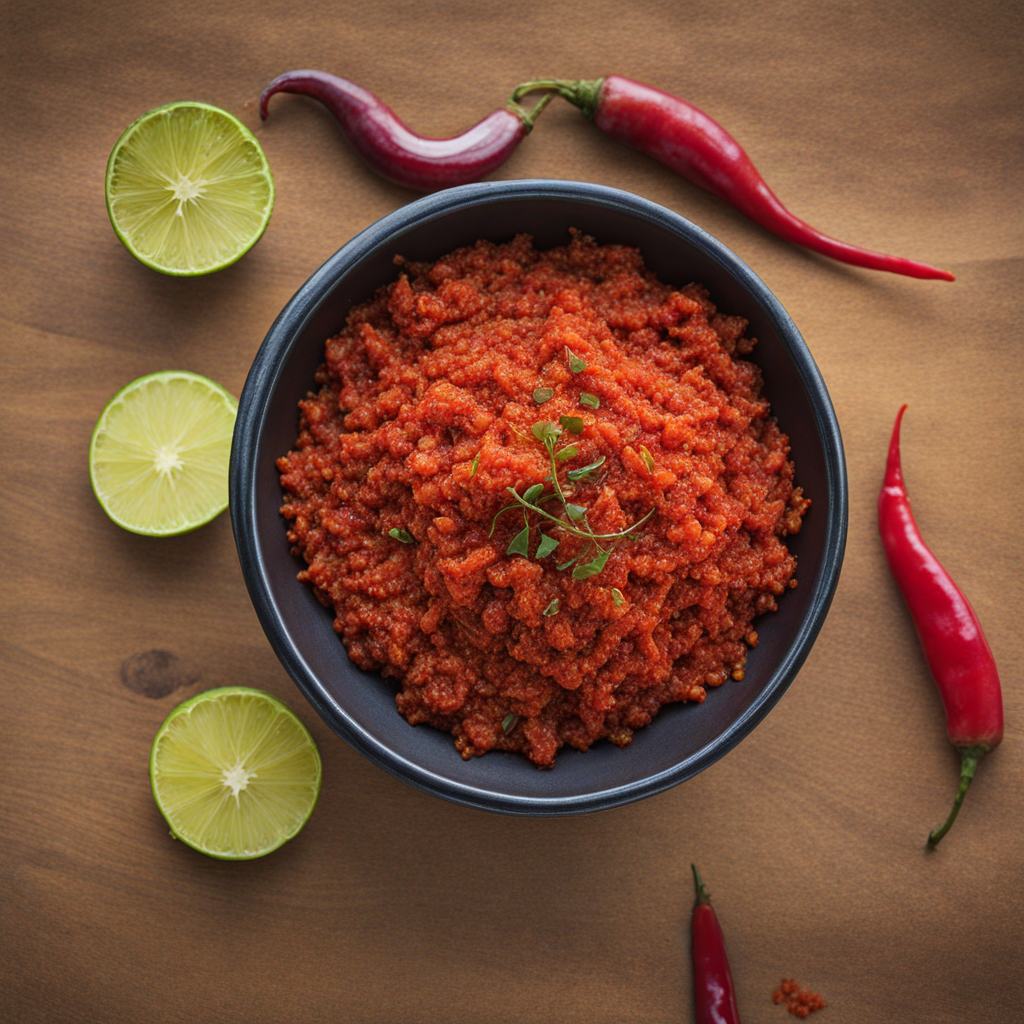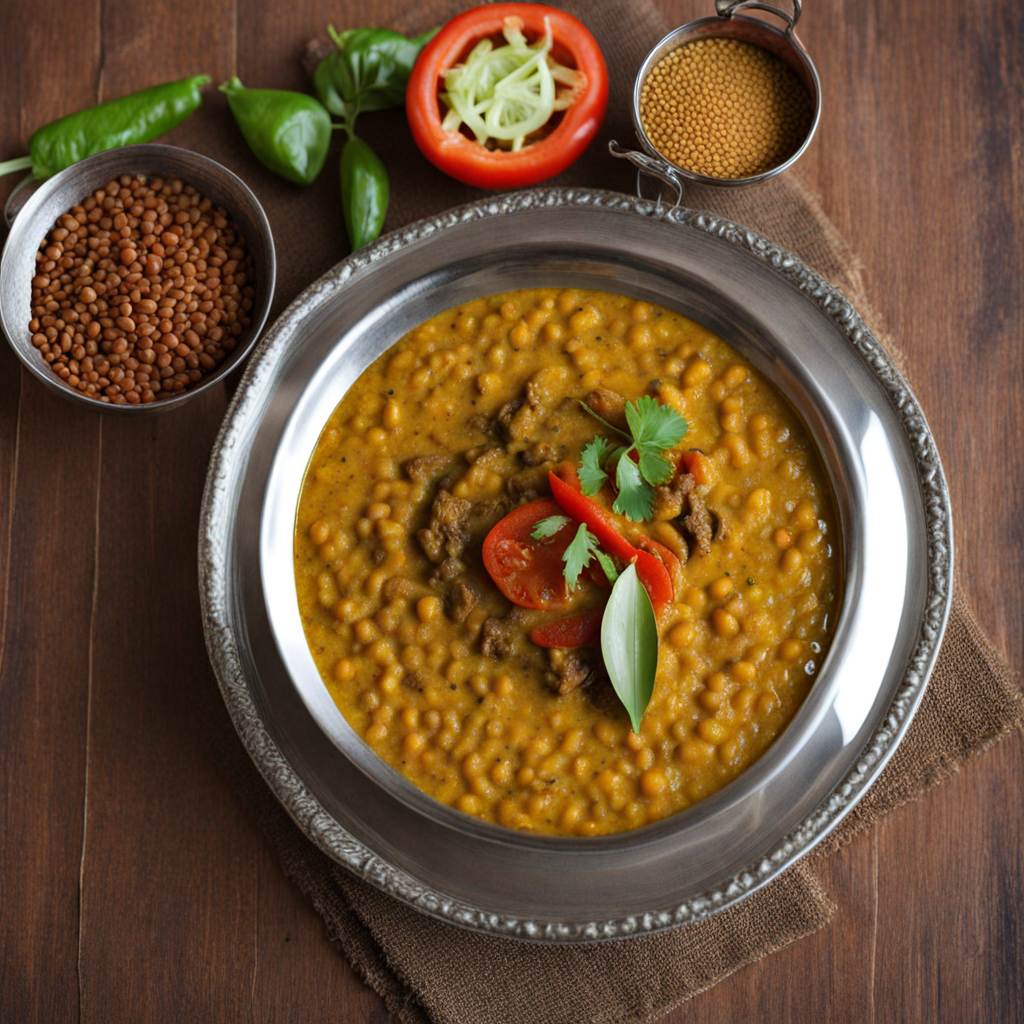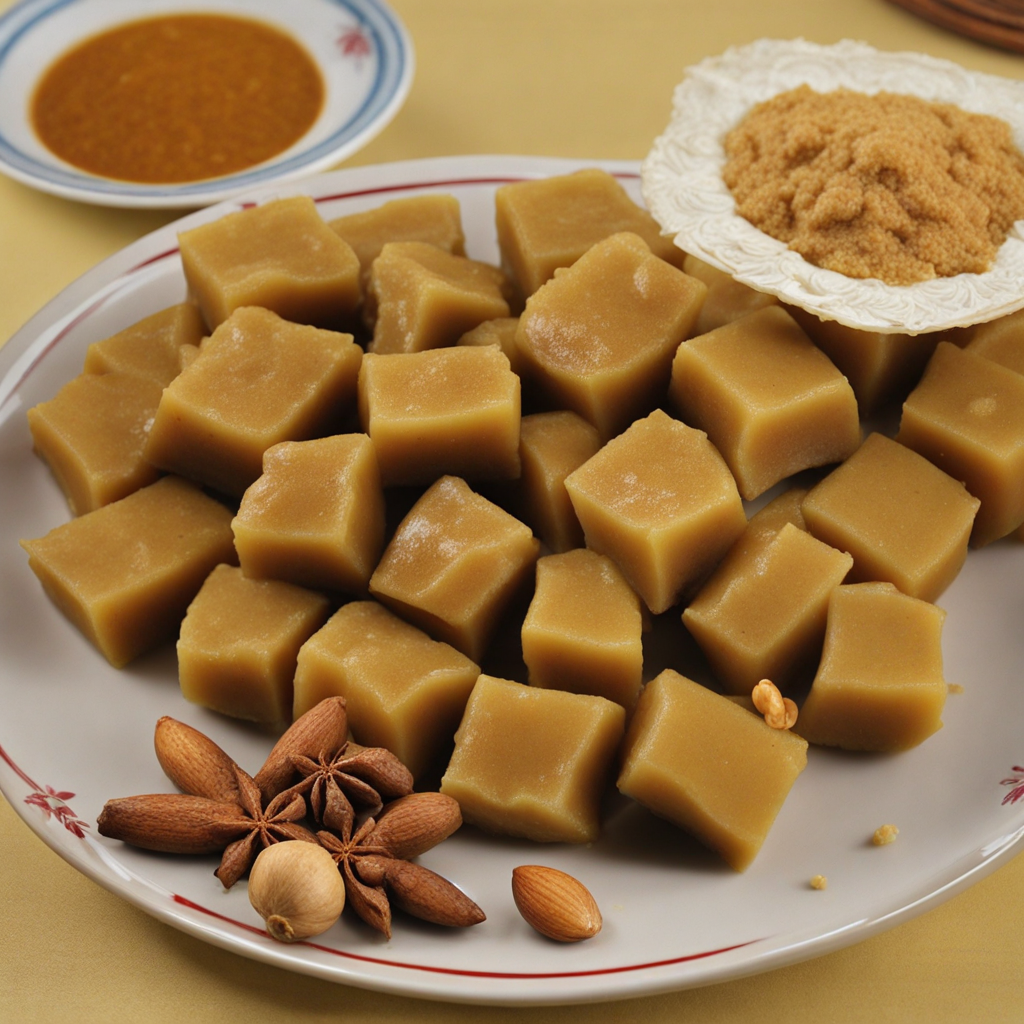Kiribath
Kiribath, a traditional Sri Lankan dish, is a delectable rice preparation that translates to "milk rice." This dish is made by cooking short-grain rice in coconut milk, which imparts a rich, creamy texture and a subtly sweet flavor. The rice is typically boiled until it reaches a soft, sticky consistency, making it ideal for molding into shapes or slicing into squares. The use of fresh coconut milk not only enhances the dish's taste but also adds a unique aroma that is both comforting and inviting. Often served during festive occasions and special celebrations, Kiribath holds a significant place in Sri Lankan culture. It is commonly accompanied by a variety of sides, such as lunu miris, a spicy onion and chili sambol, or jaggery, which is a sweet, unrefined sugar made from palm sap. These accompaniments provide a delightful contrast to the mild sweetness of the Kiribath, creating a harmonious balance of flavors that tantalizes the palate. Kiribath is not only a dish for special occasions but also a beloved breakfast item in many households across Sri Lanka. It is often enjoyed with a sprinkle of salt or accompanied by a savory curry, making it a versatile option that can be tailored to individual tastes. Its unique flavor profile, combining the creaminess of coconut with the simplicity of rice, makes Kiribath a must-try for anyone looking to explore the rich culinary heritage of Sri Lanka.
How It Became This Dish
The History of Kiribath: A Culinary Treasure of Sri Lanka #### Origins and Early Beginnings Kiribath, literally translating to "milk rice," is a traditional Sri Lankan dish that dates back centuries, deeply rooted in the island's agricultural practices and cultural heritage. The dish is made primarily from rice cooked in coconut milk, resulting in a creamy, rich texture that is both comforting and nourishing. Its origins can be traced to the introduction of rice cultivation in Sri Lanka, which began around 500 BCE. As rice became a staple food, the locals began experimenting with different cooking methods and ingredients, leading to the creation of various rice-based dishes, including Kiribath. The use of coconut milk in Sri Lankan cuisine has been prevalent since ancient times, as coconuts are abundant on the island. The integration of coconut milk into rice dishes like Kiribath reflects the resourcefulness of Sri Lankan cooks, who made use of locally available ingredients to create flavorful and sustaining meals. The dish embodies the essence of Sri Lankan cooking—simple yet rich in flavor, often served with an array of accompaniments that enhance its taste. #### Cultural Significance Kiribath holds significant cultural importance in Sri Lankan society, particularly during ceremonial occasions. It is often prepared for auspicious events such as weddings, the first meal of a newborn, and the Sinhala and Tamil New Year celebrations. The preparation and consumption of Kiribath during these occasions symbolize prosperity, fertility, and new beginnings. The dish is typically accompanied by a variety of condiments, such as jaggery, banana, or spicy sambols, which elevate its flavor and offer a delightful contrast to its creamy texture. During the Sinhala and Tamil New Year, Kiribath is a central component of the festive meal. It is often shaped into a square block and cut into pieces, symbolizing the traditional practice of sharing food among family and friends. This communal aspect of dining reflects the values of hospitality and togetherness that are deeply ingrained in Sri Lankan culture. Furthermore, Kiribath is associated with the agricultural calendar of Sri Lanka. The harvest season is a time of celebration, and Kiribath is often prepared to mark the bounty of the land. The dish serves as a reminder of the connection between the people and their agrarian roots, celebrating the fruits of their labor and the importance of sustainable practices in food production. #### Development Over Time As Sri Lanka's cultural landscape evolved, so too did the preparation and presentation of Kiribath. In ancient times, Kiribath would have been cooked in clay pots over an open flame, a method that imparted a distinct smoky flavor to the dish. With the advent of modern cooking appliances, the preparation of Kiribath has become more streamlined and efficient, but the traditional methods are still cherished, especially during significant cultural events. In contemporary Sri Lankan households, Kiribath continues to be a beloved staple, often enjoyed for breakfast or as a light meal. While the traditional recipe remains largely unchanged, variations have emerged, reflecting the island's diverse culinary influences. For example, some modern interpretations incorporate spices like cardamom or pandan leaves to add aromatic depth to the dish. Additionally, the use of different types of rice, such as red or brown rice, has gained popularity among health-conscious consumers, further diversifying the offerings of this age-old dish. The globalization of food culture has also influenced the way Kiribath is perceived and enjoyed. As Sri Lankan cuisine has gained recognition on the international stage, Kiribath has found its way into restaurants and food festivals around the world. Chefs are now experimenting with fusion versions of Kiribath, incorporating ingredients from other culinary traditions, which has led to innovative interpretations while still honoring the dish's traditional roots. #### Kiribath in Modern Sri Lankan Society In modern Sri Lanka, Kiribath is not just a food item; it is a symbol of national identity and cultural pride. The dish is a focal point in discussions about Sri Lankan gastronomy and heritage. Food festivals and culinary events often feature Kiribath as a highlight, showcasing its versatility and importance in the country's culinary narrative. Moreover, Kiribath has gained prominence on social media platforms, where influencers and food bloggers share their unique takes on the dish, inspiring a new generation of cooks to explore traditional recipes. This digital renaissance has led to a revival of interest in Sri Lankan cuisine, with Kiribath serving as a gateway to understanding the island's rich culinary history. #### Conclusion Kiribath is more than just a dish; it is a testament to the rich agricultural heritage and cultural significance of Sri Lanka. From its humble beginnings as a staple food for rural communities to its status as a cherished dish during festive occasions, Kiribath has transcended generations, adapting and evolving while remaining deeply rooted in tradition. As Sri Lanka continues to navigate the complexities of modernity, Kiribath stands as a delicious reminder of the island’s past, its connection to the land, and the importance of community and celebration in food culture. In a world that increasingly values authenticity and heritage, Kiribath serves as a culinary emblem of Sri Lanka—a dish that not only nourishes the body but also feeds the soul, connecting people through shared history, culture, and love for food. Whether enjoyed in a bustling household during a festive celebration or as a simple breakfast, Kiribath remains a beloved dish that continues to embody the spirit of Sri Lankan cuisine.
You may like
Discover local flavors from Sri Lanka



